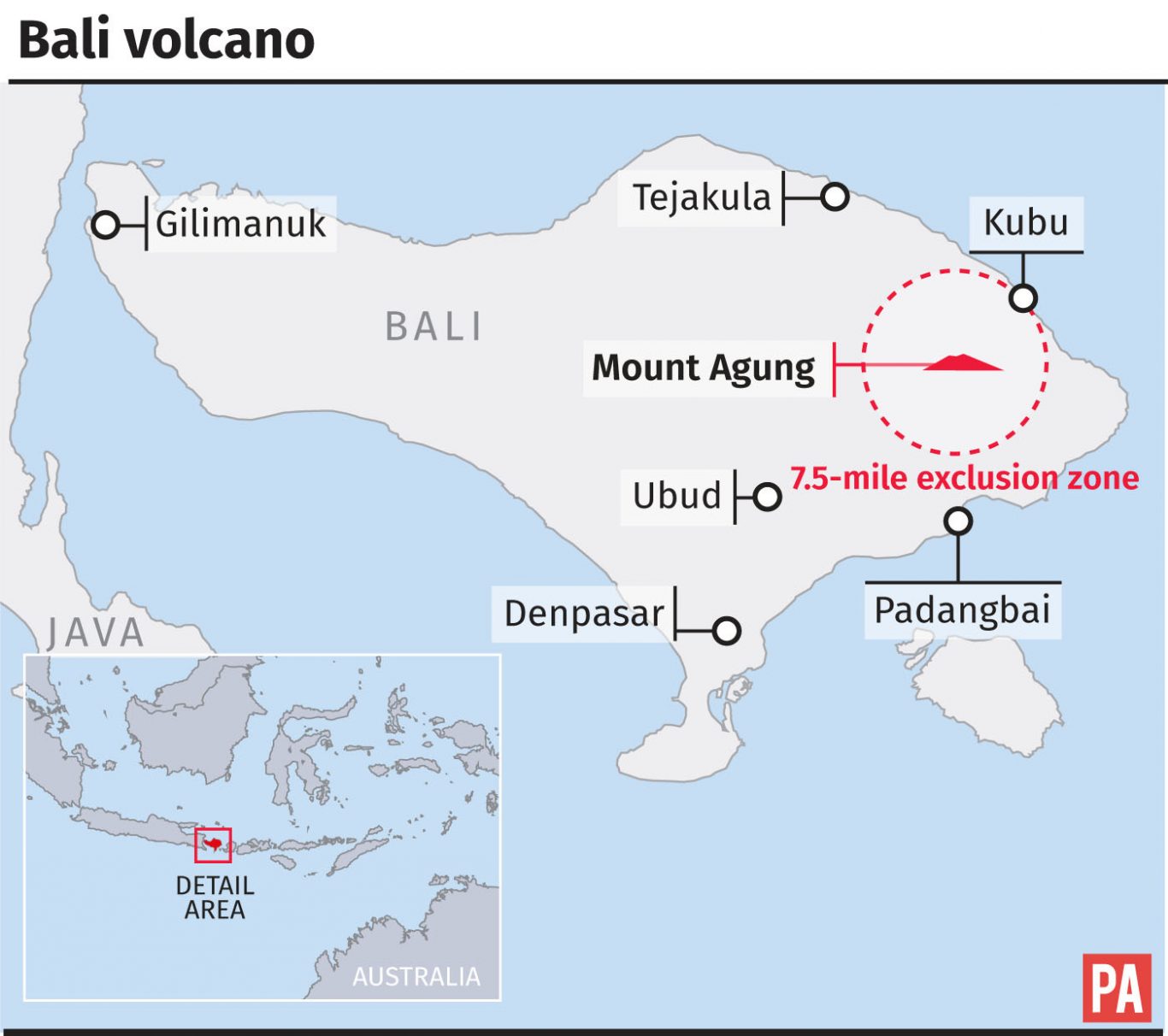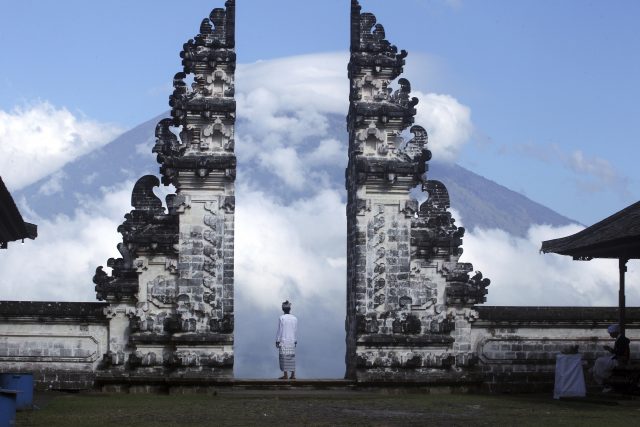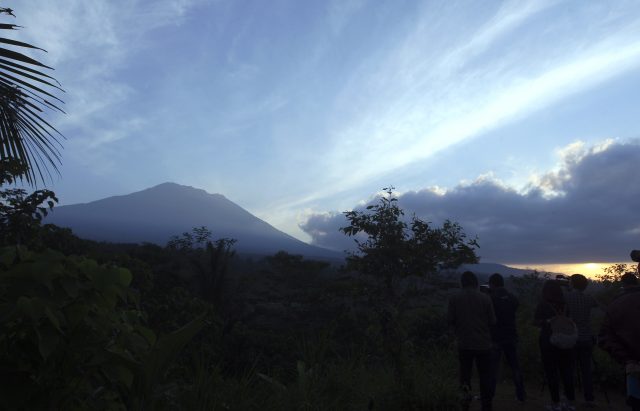More than 120,000 people have fled the area around the Mount Agung volcano on the Indonesian tourist island of Bali, fearing it will soon erupt, an official said.
Nyoman Parwata, from the disaster mitigation agency’s command post in Bali, said the number of evacuees has swelled to about 122,500.

They are scattered in more than 500 locations across the island famed for its beaches, lush green interior and elegant Hindu culture, taking shelter in temporary camps, sports centres and other public buildings.
The volcano has been at its highest alert level since Friday, sparking a massive exodus of villagers. Thousands of cows are also being evacuated.

An exclusion zone around the mountain extends as far as 7.5 miles (12km) from the crater in places but officials say people further from the volcano are also leaving.
Mt Agung, which dominates the landscape in the north-east of the island, last erupted in 1963, killing more than 1,100 people. It remained active for about a year.
Volcanologists say the recent dramatic escalation in tremors indicates an eruption is more likely than not, but they cannot say with certainty when it will happen.

“I would definitely be following the advice to stay outside the exclusion zone,” said Heather Handley, an assistant earth sciences professor at Sydney’s Macquarie University. The increase in tremors suggests an eruption is “imminent”, she added.
The 1963 eruptions produced deadly clouds of searing hot ash, gases and rock fragments which travelled down Agung’s slopes at great speed. Lava spread for several miles and people were also killed by lahars – rivers of water and volcanic debris.
The mountain, about 45 miles (70km) to the north-east of the tourist hotspot of Kuta, is among more than 120 active volcanoes in Indonesia.

Another volcano, Mount Sinabung on Sumatra, has been erupting sporadically since 2010, sometimes blasting volcanic ash several miles into the air and forcing more than 30,000 people to evacuate their villages.
Indonesia, an archipelago of thousands of islands, is prone to seismic upheaval due to its location on the Pacific “Ring of Fire”, an arc of volcanoes and fault lines encircling the Pacific Basin.






